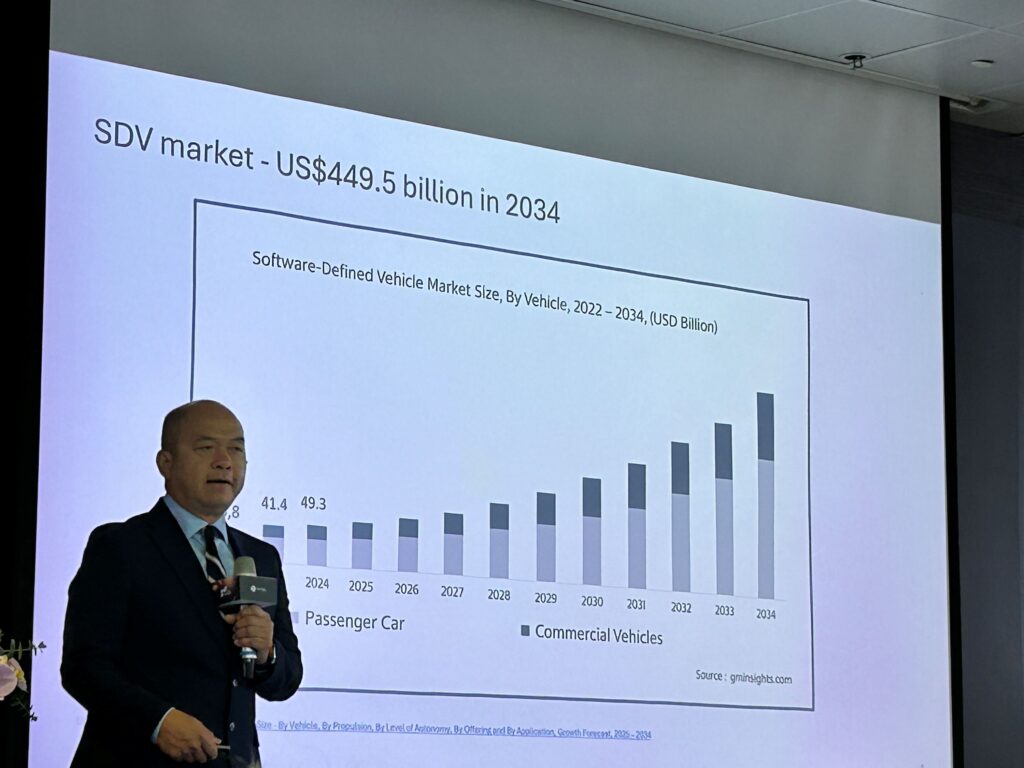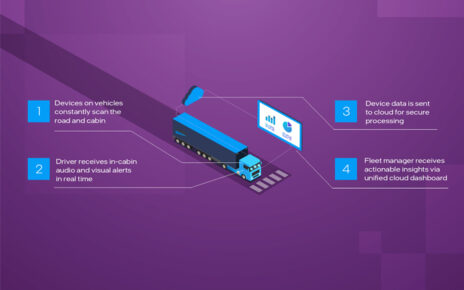At the 360° Mobility Forum at the Taipei AMPA, E-mobility Taiwan 2035, and Autotronics Taipei show, ST Liew, Vice President of QUALCOMM CDMA Technologies Asia-Pacific Pte. Ltd. and President of Qualcomm Taiwan & SEA, Australia, New Zealand, addressed the evolving landscape of automotive technology. His speech, given to an audience of industry leaders and innovators, underscored the profound transformation happening in the world of motor vehicles—one driven largely by advances in computing power and artificial intelligence (AI).

“Today, we’re witnessing the transformation of motor vehicles into powerful computing devices,” Liew began, setting the stage for a deep dive into Qualcomm’s role in shaping this future. He explained that vehicles today are no longer just modes of transportation; they have become sophisticated, software-defined devices. The real transformation lies in how these vehicles leverage advanced AI capabilities, particularly AI on the edge, to provide new possibilities for drivers and passengers alike.
“Motor vehicles are no longer just cars; they are devices on the edge,” he emphasized. He highlighted the increasing importance of software in defining not just the safety and design of cars but also the in-car experience. In this new era, the cockpit experience is key. No longer limited to basic controls, vehicles now offer immersive entertainment, communication, and productivity tools powered by AI. “With the rise of AI, there are limitless possibilities for what we can experience in the car,” he remarked.
The impact of these innovations is already being felt in the industry. According to market research, the global market for software-defined vehicles is expected to be worth over $440 billion by 2034, with a significant portion of that growth driven by AI technologies. Liew pointed out that consumers increasingly expect more from their vehicles—not just in terms of transportation but as interactive, connected hubs that enhance their daily lives.
As Liew explained, “Consumers are no longer just looking for a ride—they want an immersive experience, from entertainment to communication, all made possible by AI.” This shift has fueled Qualcomm’s strategy to integrate its AI and computing capabilities into the automotive industry. With over 20 years of experience in mobile technology, Qualcomm has evolved its solutions to support the automotive sector, providing platforms that drive the digital transformation of vehicles.

Qualcomm’s flagship platform, the Snapdragon Digital Chassis, is at the heart of this transformation. This comprehensive solution includes four key pillars: connectivity, car-to-car communication, cockpit experience, and advanced driver-assistance systems (ADAS). These platforms ensure that vehicles are not only connected but also intelligent, capable of offering a range of services to drivers and passengers. Liew noted that these platforms enable seamless connectivity—ensuring that vehicles are always connected to the network, whether it’s through 5G or future technologies.
“Connectivity is the foundation of the intelligent vehicle ecosystem,” he stated. He explained that Snapdragon’s advanced connectivity capabilities enable precise location services and infotainment systems, transforming vehicles into connected hubs. With these platforms, Qualcomm is pushing the boundaries of what’s possible, allowing for better vehicle-to-vehicle communication, intelligent navigation, and real-time data sharing.
The digital cockpit experience is another focal point. Liew shared that the cockpit is where drivers and passengers spend most of their time, and Qualcomm aims to make this experience as immersive and seamless as possible. “AI is transforming the cockpit into an experience center—whether it’s multimedia, navigation, or personal assistance,” he said. Through Qualcomm’s AI-driven platforms, vehicles can offer real-time, context-aware interactions that adjust based on driver preferences and external factors.
Beyond these innovations, Qualcomm has also advanced its ADAS capabilities. By integrating scalable AI-driven systems, vehicles are becoming smarter and more capable of autonomous decision-making. “ADAS is the backbone of safety and autonomy in modern vehicles,” he noted. He highlighted how Qualcomm’s solutions help to map out safe driving trajectories, enhancing both safety and convenience for drivers.
One of Qualcomm’s major technological advances in this space is the Orion CPU, designed specifically for the automotive industry. Liew explained that the Orion CPU’s robust processing power enables complex AI algorithms to run efficiently within the vehicle. “The Orion CPU is tailor-made for multimodal AI,” he remarked. This allows vehicles to process data from a variety of sensors and inputs, whether they’re from the vehicle’s surroundings or the driver’s commands. The result is a highly personalized, responsive driving experience that adapts over time.

“Multimodal AI is not just about voice commands or gestures,” he explained. “It’s about combining all these inputs—voice, touch, environment data—to create a seamless, intelligent system.” This compound AI approach, as Qualcomm calls it, is essential for next-generation vehicles, allowing them to learn from their environment and provide contextually relevant responses. Whether a driver is requesting directions or seeking recommendations for nearby coffee shops, the vehicle is equipped to understand and respond intuitively.
Through collaboration with industry partners, Qualcomm aims to integrate these capabilities across a wide range of vehicles. Liew emphasized the importance of a strong ecosystem to support this transition, stating, “The car is no longer just a product of a single company; it’s part of a broader ecosystem.” Qualcomm’s work with partners ensures that their platform is not just a technology solution but part of a scalable ecosystem that supports the growth of the entire automotive industry.
Looking to the future, he expressed optimism about the role of AI and connectivity in shaping the next generation of vehicles. “We’re entering a pivotal moment in technological progress,” he concluded. “AI is revolutionizing cars, PCs, phones, and every aspect of our digital lives. The future is not just autonomous driving—it’s intelligent, connected mobility.”
As the automotive industry continues to evolve, Qualcomm’s role in advancing AI and computing technology will remain central. With their Snapdragon Digital Chassis and a strong focus on AI-driven innovation, Qualcomm is helping to define the future of transportation. “The journey has just begun,” he said, concluding his speech. “We are excited to see how the industry progresses as we work together to bring these transformative technologies to life.”




